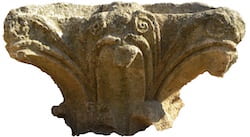Charles Stewart, Benedictine College (Kansas)
In 2020 a funerary chapel was excavated near the Chinese-Kazakhstan border at site called Ucharal-Ilibalyk. The chapel has a “basilical” design and, at the eastern end, there is a square chamber with a table—thus, tentatively, identified as a bema with an altar. Because this chapel formed the southern boundary of a cemetery where Christian artifacts and five Syriac-inscribed tombstones were found, the monument has been associated with Church of the East, dating to the late thirteenth century. Ceramic vessels were also uncovered and, curiously, an oven (tandoor) was embedded within the altar itself. These finds have opened up the possibility that ceramic vessels were used for the Eucharistic celebration (Holy Qurbana), and that leavened bread could be prepared within the sanctuary. If so, this has ramifications for our understanding of liturgical symbolism, at least, as it developed in Central Asia. Fortunately, this archaeological data closely corresponds to the Syriac Funerary Service (Berlin MS MIK III 45) found at the Bulayik Monastery (Turfan, China), which was recently translated by Erica Hunter and J. F. Coakley. By examining both the textual and archaeological data, we can begin reconstructing and visualizing the profound symbolism behind these rituals and architectural designs.
